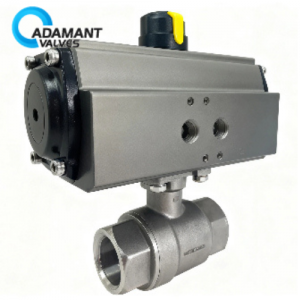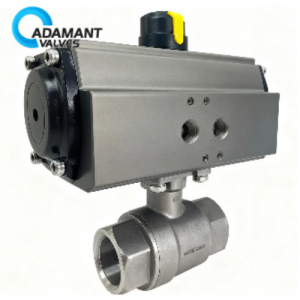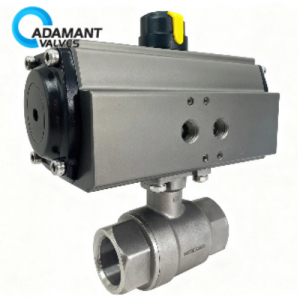Are Pressure Relief Valves the Same as Safety Valves?

According to U.S. standards and regulations, Safety Valves and Pressure Relief Valves are a family of valves applied for different purposes. There are some key differences between them in application and working principles.
While both are overpressure protection devices, safety valves are designed for gas or steam and open instantly to full capacity. In contrast, pressure relief valves, typically used for liquids, open gradually at a rate proportional to the overpressure.
Safety Valve Definition
According to the ASME Boiler and Pressure Vessel Code, a safety valve is an automatic pressure relief device driven by the static pressure of the medium upstream of the valve. It is characterized by a rapid full-opening action and used for gas or steam applications.
A safety valve is an automatic valve primarily employed to protect the system against overpressure. In case the working pressure of the medium surpasses the set value, the valve automatically opens to return the excessive pressure. This prevents equipment damage or accidents. Safety valves are typically used in closed systems like boilers and storage tanks. They have fast response characteristics.
How many types of safety valves are there?
By structure, there are spring-type, lever-type, and pilot-operated types. By discharge method, there are fully enclosed, semi-enclosed, and open types.
What is the set pressure for a safety valve?
It is the pressure value at which the valve is designed and calibrated to open to relieve overpressure. This shall not be higher than the maximum allowable working pressure of the equipment being protected.
What is the 3% rule for safety valves?
The 3% rule is a common requirement in the ASME codes, which is applied mainly for main steam safety valves on boilers. In this rule, the valve should reach full opening and discharge its full-rated capacity within 3 percent over-pressure above the set pressure.
What is the most common use of a safety valve?
The common usage is related to safeguarding boilers, pressure vessels, and piping systems from explosion or failure due to overpressure. As such, they find broad applications in industries ranging from power generation to petrochemicals and pharmaceuticals.
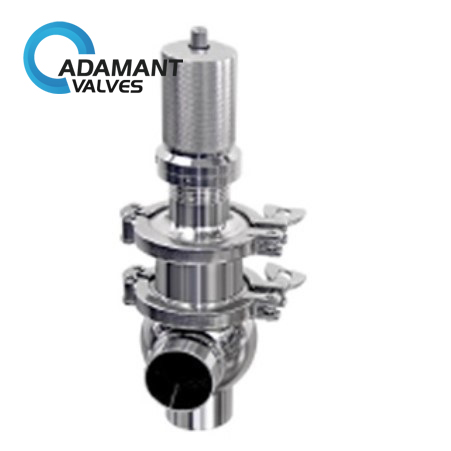
AV-9PQ Sanitary Pneumatic Quick-release Safety Valve
Pressure Relief Valve Definition
Also referring to the ASME Boiler and Pressure Vessel Code, a pressure relief valve is an automatic pressure relief device driven by the static pressure of the medium upstream of the valve. It opens proportionally as the pressure increases beyond the opening force. It is primarily used for fluid applications.
A pressure relief valve is also called an overflow valve. It is mainly used to control system pressure so it does not exceed the set value. When the system pressure exceeds the set value, the pressure relief valve opens to discharge fluid and reduce pressure. Its design focuses more on maintaining stable system operation.
How many types of pressure relief valves are there?
Based on their overall structure and loading mechanism, they can be divided into three types: weight-lever type, spring type, and impulse type.
What is the main purpose of a pressure relief valve?
Its main purpose is to prevent pressure from exceeding preset limits in liquid systems, thereby protecting equipment. It opens gradually to divert excess fluid back into the system or to the atmosphere. This controls pressure and ensures the system operates within safe pressure limits.
How can I tell if my pressure relief valve is faulty?
You can identify a faulty pressure relief valve by several signs. The most common failure signs include: failure to open when the set pressure is reached, continuous leakage or dripping when system pressure is normal, or failure to reseat properly after relieving pressure, causing continued leakage.
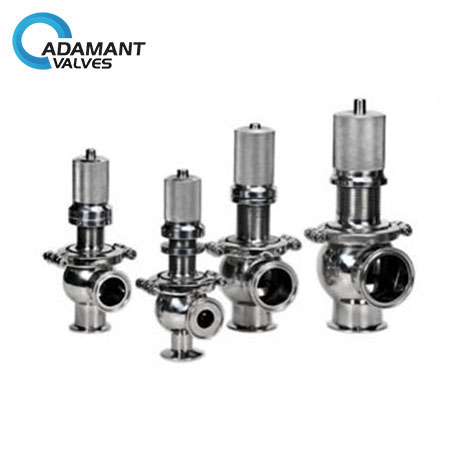
AV-9S Sanitary Safety Pressure Relief Valve with Tri-clamp Ends
They Both Release Excess Pressure, Why are They Different?
Their functions are not actually exactly the same.
Safety valves are mainly used for compressed gases and steam. Their main feature is a fast, full-opening “pop” action. When system pressure exceeds the set pressure, the safety valve opens almost instantly. This rapid action is crucial for releasing large amounts of expanding gas or steam. It prevents catastrophic overpressure events. Once the pressure drops to a safe level, the safety valve also closes quickly.
Pressure relief valves, on the other hand, are mainly used for incompressible fluids, such as liquids (like water, hydraulic oil). The opening degree of a pressure relief valve is proportional to the amount by which the pressure exceeds the set value. As the pressure rises, the valve opens gradually. Compared to the quick “pop” action of a safety valve, the operation of a pressure relief valve is smoother and more controllable.
Because their working principles differ, their application scenarios are also different.
Safety valves are primarily used for boilers, steam headers, compressed air receivers, and any system containing large amounts of gas or steam. Pressure relief valves are mainly used for hydraulic systems, fuel lines, liquid transfer pumps, and hot water heating systems.


